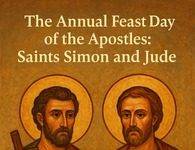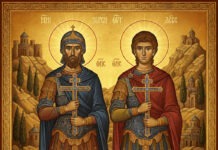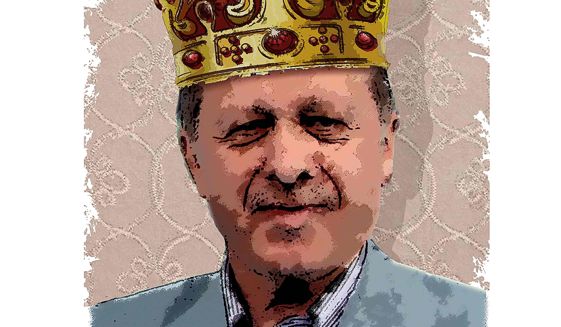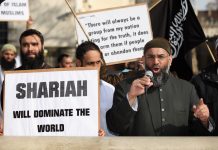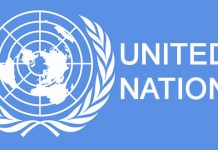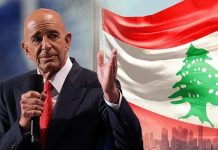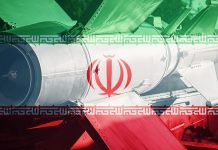لماذا لن تصبح تركيا إيران جديدة؟
أمير طاهري/الشرق الأوسط/29 حزيران/18
هل ستصبح تركيا إيران جديدة؟ مع فوز الرئيس رجب طيب إردوغان في الانتخابات الأخيرة، أثير هذا السؤال عبر الدوائر السياسية الغربية. ورغم حقيقة أن فوز إردوغان في الانتخابات التي جرت الأحد يعطيه سلطات جديدة كاسحة، فإن إجابتي المختصرة على هذا السؤال: لا!
عند تحليل طبيعة السلطة السياسية في أي صورة لها، يجب أن يتعلق أول سؤال بمنشأ هذه السلطة؛ لأن منبع السلطة هو ما يحدد إلى أين قد تذهب. في إيران عام 1979، كانت السلطة شبيهة بصندوق مجوهرات ألقي به في الشارع ليتلقفه أي شخص. كان الشاه قد غادر البلاد، وكان معظم أعضاء مجلس النظام الملكي الذي عينه في الريفيرا الفرنسية، بينما أعلنت قيادات الجيش الكبرى «وقوفها على الحياد»؛ الأمر الذي كان يعني أن القوات العسكرية لن تتدخل لمنع أي شخص من التقاط صندوق المجوهرات الملقى في الشارع.
بفضل ضربة حظ ومزيج غريب من الظروف، كان آية الله الخميني هو من أبدى الشجاعة اللازمة لالتقاط الصندوق، بعدما اختفى آخر رئيس وزراء في عهد الشاه، شابور بختيار، في انتظار تهريبه من طهران إلى باريس.
لكن إردوغان، على خلاف الخميني، وضع يده على صندوق مجوهرات خاص به في صورة 52 في المائة من الأصوات، في واحدة من أكبر الانتخابات في تاريخ تركيا من حيث نسبة المشاركة. وحتى مع الأخذ في الاعتبار حالات الامتناع عن التصويت والانحرافات الحقيقية أو المزعومة في العملية الانتخابية، لا يمكن لأحد نفي مسألة تمتع إردوغان بقاعدة دعم صلبة، تمثل على الأقل 32 في المائة من الناخبين الأتراك.
على النقيض، وعلى خلاف إردوغان الذي شارك في المشهد السياسي التركي طوال ثلاثة عقود تقريباً، بينها 15 عاماً على رأس السلطة الحاكمة، كان الخميني الذي استحوذ على السلطة في إيران شخصية مجهولة في أوساط غالبية الإيرانيين. وأشارت أفضل استطلاعات الرأي التي أجريت في تلك الفترة، إلى أن الملا المنفي لن يحصل على أكثر مما يتراوح بين 5 في المائة و10 في المائة من الأصوات، في أي انتخابات حرة ونزيهة. وجاء التأييد الذي حظي به الخميني من طهران، وعدد قليل من المدن الكبيرة الأخرى، خاصة أصفهان، بينما ترتكز قاعدة تأييد إردوغان في مناطق ريفية ومدن صغيرة ومتوسطة. كانت الانتفاضة التي جاءت بالخميني إلى السلطة في الجزء الأغلب منها من صنع الطبقة المتوسطة الحضرية، في الوقت الذي يعتمد فيه إردوغان على دعم سكان المناطق الريفية والطبقات العاملة، وما يطلق عليها البرجوازية الصغيرة.
حصل الخميني على دعم قوي من جميع أطياف الأحزاب والآيديولوجيات اليسارية من الديمقراطيين الاشتراكيين، حتى الماويين، وصولاً إلى الماركسيين الإسلاميين. على الجانب الآخر يعتبر إردوغان الحصان الأسود لليسار التركي. وفي الوقت الذي استخدم فيه الخميني وحاشيته كثيراً من مصطلحات اليسار، بما في ذلك الكليشيهات المكررة، مثل «المستضعفين» و«الاستكبار»، فإن المصطلحات السياسية التي يستخدمها إردوغان ترتبط أكثر بالشعبوية عن الماركسية. كما تضمنت الحاشية المقربة من الخميني كثيراً من علماء الدين، بجانب أعضاء مجموعة متنوعة من الجماعات الإسلامية العنيفة، بما في ذلك «فدائيو الإسلام» و«حزب الله» (الذي تأسس 1975)، و«الائتلاف الإسلامي»، و«الجمعية الحجتية». على النقيض، نجد أنه لا يكاد يوجد أي رجال دين في الحاشية المحيطة بإردوغان. ورغم ميله من حين لآخر لاستخدام شعارات إسلامية، يواجه إردوغان معارضة قوية من مجموعة واسعة من الجماعات الإسلامية، بدءاً من حركة الخدمة التي يقودها الداعية المنفي فتح الله غولن، ناهيك عن نحو 100 جماعة صوفية، والشيعة العلويين. في الحقيقة، تخشى الشبكات الإسلامية داخل تركيا سيطرة الدولة على منظماتها وشركاتها، في الوقت الذي يتعمد إردوغان الظهور بمظهر ورع، وإثارة جلبة من وقت لآخر ضد العلمانية الكمالية.
بالنسبة لمعظم الإيرانيين، كان الخميني شخصاً غير معروف، وكان استحواذه على السلطة أقرب إلى ضربة حظ وليس نتيجة اختيار واعٍ.
أما إردوغان، فمعروف جيداً لدى الأتراك الذين حظوا بفرصة كافية لمتابعته كزعيم لحزبه، وعمدة لإسطنبول، ورئيس للوزراء، ثم رئيس للبلاد. أظهر الخميني ازدراءً تجاه القضايا الاقتصادية، وأعلن ذات مرة أن «الاهتمام بالاقتصاد من سمات الحمير»، وتباهى بأن ثورته لم يكن الهدف منها تحقيق الرخاء، وإنما كانت فرصة لنيل الشهادة. في المقابل، نجد أن إردوغان لعب ببطاقة التنمية الاقتصادية من البداية، عندما حول إسطنبول من منطقة حضرية رثة وشبه مفلسة، إلى مدينة ضخمة تعج بالحركة وذات طموحات عالمية. في ظل النظام الخميني أصبحت إيران أشد فقراً بنسبة 40 في المائة على الأقل، من حيث القيمة الحقيقية عما كان عليه حالها في ظل حكم الشاه. على الجانب الآخر نجد أنه تحت قيادة إردوغان نجحت تركيا في مضاعفة إجمالي الناتج الداخلي السنوي لديها، وهو أداء يفوق ما يطلق عليها «المعجزة الصينية».
منذ اللحظة الأولى، قوبلت رسالة الخميني بكراهية من جانب الأقليات العرقية الإيرانية. ولسنوات بعد سيطرتهم على السلطة، اضطر الخميني وعشيرته إلى استخدام أقصى صور العنف لسحق الأقليات، من خلال عمليات الإعدام الجماعي، وتنفيذ عمليات اعتقال واسعة النطاق؛ بل وعمليات عسكرية كاملة ضد الإيرانيين من أصول عربية في خوزستان، والإيرانيين الأكراد، داخل ثلاث محافظات، والإيرانيين التركمان في محافظة غلستان، والإيرانيين البلوش في سيستان وبلوشستان. في المقابل، يدين إردوغان بنجاحه في الوصول إلى السلطة للمرة الأولى، إلى الدعم الواسع الذي حظي به في أوساط الأقلية الكردية داخل تركيا. ولا تنفي الحروب التي شنها في وقت لاحق ضد جماعات كردية مسلحة ترتبط معظمها بحزب العمال الكردستاني، حقيقة أنه حتى خلال الانتخابات الأخيرة حقق حزب العدالة والتنمية الذي يقوده إردوغان نتائج جيدة، في المناطق التي تقطنها أغلبية كردية من إقليم الأناضول.
تحت قيادة الخميني ومن خلفوه، لقي ما يزيد على مليون إيراني حتفهم في حروب أجنبية، وحروب ضد خصوم محليين، وأقليات عربية، وعمليات إعدام جماعي. إلا أن ضحايا الانحرافات المشابهة التي تورط فيها نظام إردوغان يعدون بالآلاف، ومع أن هذه الأعداد كبيرة للغاية لكن لا يمكن مقارنتها بسجل ملالي إيران. وبينما جرى إعدام 40 ألف شخص على الأقل في ظل حكم الخميني ومن خلفوه، يرفض إردوغان إعادة عقوبة الإعدام إلى تركيا. وطبقاً لما أعلنه رئيس السلطة القضائية آية الله آملي لاريجاني، فإنه في اللحظة الراهنة هناك 15 ألف إيراني في السجون، صدرت ضدهم عقوبات بالإعدام، وفي انتظار تنفيذها.
وحظر الخميني جميع الأحزاب السياسية، بينما أظهر إردوغان على الأقل حتى الآن استعداده لخوض انتخابات ينافس بها أكثر من حزب، في إطار نظام تعددي.
وشكل الفساد سمة مشتركة بين نظامي الخميني وإردوغان. ومع هذا هناك اختلافات على هذا الصعيد أيضاً. كان الخميني قد استولى على أكثر من 165 ألف شركة خاصة، ووزعها على أفراد حاشيته وأنصاره وأقاربه. كما أشرف على خصخصة كثير من الشركات العامة، التي نقل ملكيتها إلى تابعين له بأسعار زهيدة. إلا أنه في تركيا اتخذ الفساد شكلاً أكثر كلاسيكية، في صورة رشاوى، وعقود مريبة، وممارسات تجارية مثيرة للريبة. داخل الجمهورية الإسلامية تحت قيادة الخميني، أصبح الفساد هيكلياً، وأثر على جميع مفاصل الدولة. في ظل حكم إردوغان، أصبح الفساد أشبه بنبات لبلاب يمتص العصارة من شجرة وارفة.
كان الخميني شخصية متعصبة عتيقة الطراز، واستثنائية من نوعها على مستوى التاريخ السياسي المعاصر، أما إردوغان فسياسي شعبوي عادي، ينتمي لنمط منتشر في كثير من الدول. ومع أن النمطين قادران على التسبب بأضرار، وغالباً ما يفعلان ذلك؛ فإن النمط الذي ينتمي إليه إردوغان يبقى أهون؛ بحيث يمكن التساهل إزاءه أو مواجهته ومعارضته، في إطار بعض الحدود المنطقية. أما النمط الذي ينتمي إليه الخميني، فينتمي إلى نطاق سريالي يخدم العنف والفساد والجشع. تشير معظم التقديرات إلى أن تركيا تضم 1.5 مليون من طالبي اللجوء السياسي الإيرانيين؛ لكن أحداً من الأتراك لم يسعَ لطلب اللجوء السياسي داخل الجمهورية الإسلامية الإيرانية.
Amir Taheri/Why Turkey Will Not Be Another Iran
Amir Taheri/Asharq Al Awsat/June 29/18
Is Turkey going to be another Iran? With President Recep Tayyip Erdogan’s latest electoral victory the question is making the rounds in Western political circles. Despite the fact that Sunday’s election gives Erdogan immense new powers, my short answer to the question is a firm: no!
In analyzing the nature of political power in any form the first question to ask concerns the provenance of that power. For where does power comes from determines where it may go.
In Iran in 1979 power was like a box of jewels thrown in the street, ready for anyone to pick up. The Shah had left the country and most members of the Council of Monarchy he had appointed were in the French Riviera, while the army Top Brass had declared “neutrality” which meant the military wouldn’t stop anyone from picking up the box of jewels in the street.
By a fluke of fate and a combination of bizarre circumstances, it was Ayatollah Khomeini who had the nerve and the imagination to pick up the box after the Shah’s last Prime Minister Shapour Bakhtiar had also gone into hiding waiting to be spirited out of Tehran to Paris.
However, Erdogan, unlike Khomeini has obtained his box of jewels in the form of 52 per cent of the votes cast in an election boasting one of the highest turnouts in Turkish history. Even if we make allowances for abstentions and real or alleged irregularities in the process, none could deny that Erdogan enjoys a solid support base from at least 32 per cent of the Turkish electorate.
In contrast, unlike Erdogan who has been on the Turkish political scene for almost three decades, including 15 years at the top, Khamenei, when he seized power, was a largely unknown figure to most Iranians. The best surveys we had at the time was that the exiled mullah would not collect more than five to 10 percent of the votes in any free and fair election.
Khomeini’s support came from Tehran and a few other big cities, notably Isfahan, while Erdogan’s support base is in rural areas and small and medium cities. The uprising that brought Khomeini to power was a largely urban middle class affair while Erdogan depends on the rural population, the working classes and the petty-bourgeoisie for support.
Khomeini was solidly backed by all shades of leftist parties and ideologies from social democrats to Maoists to Islamic-Marxists. Erdogan, on the other hand, is the bete-noire of the Turkish Left.
While Khomeini and his entourage adopted a good chunk of the lexicon of the left, including such worn-out clichés as “the downtrodden (Mustazafin) and “Imperialism” (Istikbar), Erdogan’s political vocabulary owes more to populism than to proto-Marixm.
Khomeini’s entourage featured numerous theologians and so-called Islamic scholars while a variety of violent Islamist groups, including the Fedayeen Islam, the Hezbollah (founded in 1975), the Islamic Coalition and the Hojjatieh Society.
In contrast there are hardly any theologians or religious scholars in Erdogan’s entourage. Despite his occasional penchant for Islamist shibboleths, Erdogan faces stiff opposition from a wide range of Islamist groups, starting with the Hizmet, khidmah in Arabic (Service) movement led by exiled preacher Fethullah Gulen, not to mention the 100 or so Sufi fraternities and the crypto-Shiite Alawite community.
In fact, Turkey’s Islamic networks fear the take-over of their organizations and businesses by the state while Erdogan adopts a pious pose and makes occasional noises against Kemalist secularism.
To most Iranians, Khomeini was an unknown quantity and his seizure of power more like a lottery than a rational choice. Warts and all, Erdogan, however, is well-known to Turks who have had time to see him in action as party leader, Mayor of Istanbul, Prime Minister and President.
Khomeini showed disdain for economic issues, once declaring that “economics is for donkeys” and boasting that his revolution was not meant to bring prosperity but a chance for martyrdom.
In contrast, Erdogan played the card of economic development from the start when he transformed Istanbul from a decrepit almost bankrupt urban sprawl into a bustling megapolis with global ambitions.
Under the Khomeinist system, Iran today is at least 40 per cent poorer in real terms than it was under the Shah, according to surveys by the central Bank of Iran. Under Erdogan’s stewardship, in contrast, the Turkey has experienced a doubling of its annual Gross Domestic Product, a performance better than the so-called “Chinese miracle.”
Right from the start, Khomeini’s message met with thinly disguised hostility by Iran’s ethnic minorities. Ad for years after seizing power the ayatollah and his clan had to use utmost violence to crush the minorities through mass executions, widespread arrests and even full-size military operations against Iranian-Arabs in Khuzestan, Iranian Kurds in three provinces, Iranian-Turcomen in Golestan province and Iranian Baluch in Sistan-and-Baluchistan.
In contrast, Erdogan owed his initial access to power to massive support among Turkey’s Kurdish minority. The subsequent wars he has waged against armed Kurdish groups, mostly linked to the Kurdistan Workers’ Party (PKK), does not nullify the fact that even in the latest election and his AKP party did well in most Kurdish-majority areas of Anatolia.
Under Khomeini and his successors more than a million Iranians have died in foreign wars, war against domestic opponents and ethnic minorities, and mass executions. The victims of similar deviations under Erdogan, however, run into thousands, still far too many but nowhere near as bad as the Iranian mullahs’ record. While at least 40,000 people have been
executed under Khomeini and his successors, Erdogan refuses to bring back the death penalty in Turkey.
Right now, according to Islamic Chief Justice Ayatollah Amoli Larijani, there are 15000 Iranians under death sentence in prison, waiting to be executed.
Khomeini banned all political parties while Erdogan has been prepared, at least until now, to contest multi-party elections in a pluralist system.
Corruption has been a feature of both the Khomeinist regime and the Erdogan stewardship. However, there, too, there are differences. Khomeini sized over 165000 private properties and distributed them among his entourage and supporters and relatives. He also presided over the privatization of numerous public companies, transferred to his minions at nominal prices.
Under Erdogan, however, corruption has taken a more classical form as kickbacks, shady contracts and dubious business practices. In Khomeini’s Islamic Republic, corruption has become structural, affecting all organs of the state. Under Erdogan, corruption more resembles an ivy sucking sustenance from a still healthy tree.
Khomeini was an antediluvian fanatic unique in contemporary political history. Erdogan is a run-of-the-mill populist of the kind now fashionable in many countries.
Both types could do damage, and often do, but the type to which Erdogan belongs could still be tolerated, or confronted and opposed within some rational parameters. The Khomeinist type, however, belongs to a surrealistic sphere of transcendental pretensions in the service of earthly violence, corruption and greed.
By most estimates there are 1.5 million Iranian asylum-seekers in Turkey but not a single Turk seeks asylum in the Islamic Republic in Iran.






